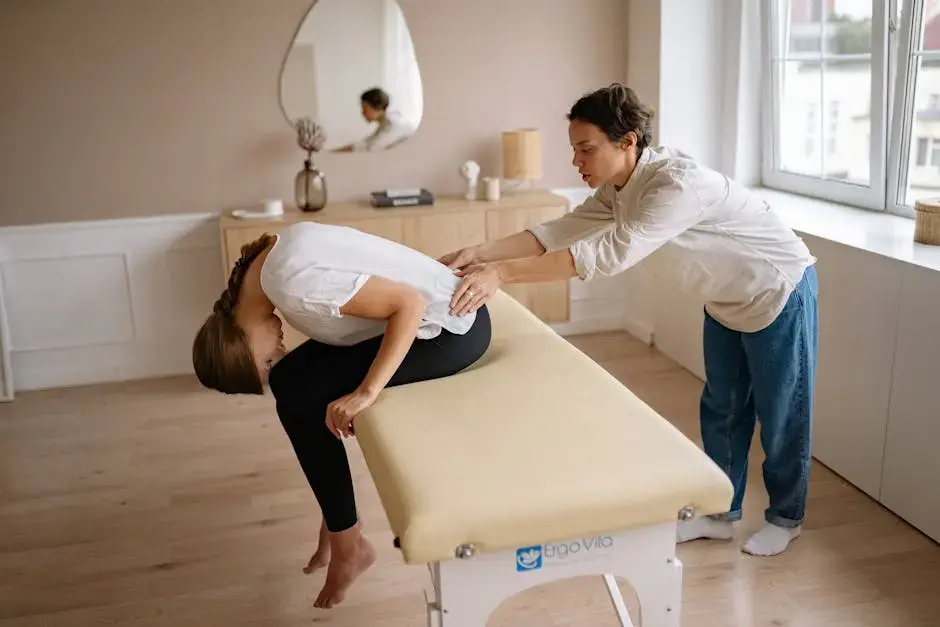What Techniques are Used in Wellness Therapy?
- tHE ONE Clinic

- Oct 10, 2024
- 4 min read
Wellness therapy encompasses a variety of techniques aimed at promoting holistic health and well-being. Understanding these techniques can empower individuals to make informed choices about their wellness journey. In this FAQ, we will explore the most popular and effective techniques used in wellness therapy.

Mindfulness and Meditation Techniques
Mindfulness techniques are at the heart of wellness therapy, promoting awareness and presence in each moment. By practicing mindfulness, individuals can develop a deeper connection with themselves, fostering a sense of calm and clarity in their daily lives.
Meditation is a popular practice within this realm, offering various styles such as guided meditations, breath awareness, and loving-kindness meditation. Each type aims to soothe the mind and reduce stress, ultimately leading to a more balanced life.
Additionally, mindfulness-based stress reduction (MBSR) combines meditation and yoga, helping people manage stress effectively. Participants often report significant improvements in mood and overall health as they incorporate these techniques into their everyday routine.
Simple techniques such as focusing on the breath or tuning into bodily sensations can be practiced anywhere, making mindfulness accessible. Engaging in these practices even for a few minutes can provide a refreshing break from the noise of daily life, promoting emotional well-being.
The key to success with mindfulness and meditation is consistency. Regular practice cultivates a greater ability to remain present, allowing individuals to navigate life's challenges with more ease and grace.
Bodywork Approaches
Bodywork approaches are pivotal in wellness therapy, incorporating various modalities that focus on physical manipulation. Techniques like massage therapy, myofascial release, and craniosacral therapy are designed to alleviate tension, improve circulation, and promote relaxation.
Massage therapy, for instance, is not just a luxury; it can significantly enhance well-being by addressing both physical and emotional discomfort. Whether it be deep tissue massage or aromatherapy, clients find relief from stress and pain, helping them to reconnect with their bodies.
Another popular bodywork technique is myofascial release, which targets the fascia – the connective tissue that surrounds muscles and organs. By releasing restrictions in the fascia, individuals often experience enhanced mobility and a greater sense of physical freedom.
Craniosacral therapy is a subtle yet profound method that works with the central nervous system to help release trauma stored within the body. Practitioners gently apply pressure to the cranial bones and spine, fostering a deep sense of relaxation and healing.
Engaging in bodywork can lead not only to physical improvements but also to mental health benefits. Many discover that addressing physical tension opens pathways for emotional healing, creating a holistic approach to wellness.
Nutritional and Dietary Strategies
Nutrition plays a crucial role in wellness therapy, as what we consume directly impacts our physical and mental health. Tailored dietary strategies can assist individuals in reaching their wellness goals.
A well-balanced diet rich in whole foods, such as fruits, vegetables, lean proteins, and healthy fats is essential. By prioritizing nutrient-dense foods, individuals can fuel their bodies for optimal performance and vitality.
Additionally, collaborating with a nutritionist can provide valuable insights into dietary habits. Guidance on meal planning, portion control, and understanding food sensitivities empowers individuals to make healthier choices tailored to their unique needs.
Incorporating mindful eating practices is another vital aspect of nutritional wellness. This involves paying attention to hunger cues and savoring each bite, promoting a healthier relationship with food and reducing overeating.
Finally, hydration is often overlooked but is essential for maintaining overall well-being. Drinking adequate water supports bodily functions and can enhance energy levels, making it an easy yet effective strategy in wellness therapy.
Creative Arts Therapies
Creative arts therapies offer unique pathways to self-expression and healing within wellness therapy. Techniques like art therapy, music therapy, and dance/movement therapy encourage individuals to explore their emotions creatively.
Art therapy can be particularly effective for those who find it challenging to verbalize their feelings. Engaging in drawing, painting, or sculpting allows individuals to manifest their emotions visually, facilitating deeper understanding and healing.
Music therapy taps into the emotional power of sound, whether through listening, songwriting, or playing instruments. This approach has shown remarkable effects on reducing anxiety, enhancing mood, and improving overall mental health.
Similarly, dance/movement therapy harnesses the body’s natural rhythms, enabling individuals to express themselves through movement. This non-verbal form of communication can be healing, fostering physical wellness and emotional release.
Through creative arts, individuals are empowered to explore their inner selves while developing new coping strategies. These therapies not only foster personal growth but also build community connections, enhancing the overall wellness journey.
Movement and Exercise Therapies
Movement and exercise therapies are foundational elements of wellness therapy, promoting physical resilience and emotional balance. Engaging in regular physical activity contributes significantly to overall health and well-being.
Yoga, a widely practiced movement therapy, merges physical postures with breathwork and meditation. This holistic approach not only strengthens the body but also fosters mental clarity and emotional stability.
Another effective approach is Pilates, which focuses on core strength, flexibility, and body awareness. Practitioners often report increased energy levels and a greater sense of grounding through consistent practice.
Group exercise classes such as Zumba or spinning can provide social support, turning fitness into a community activity. This social aspect motivates individuals and can make the journey toward better health feel more enjoyable.
Incorporating movement into daily routines, whether through walking, dancing, or gardening, reinforces the idea that wellness is not limited to formal workouts. Simple actions can contribute significantly to enhancing physical and mental health.
Embracing Your Wellness Journey
By exploring different wellness therapy techniques, individuals can find what resonates with them to enhance their overall well-being. Whether through mindfulness, bodywork, or nutritional guidance, the path to wellness is a personal journey filled with options tailored to each individual's needs.



Comments